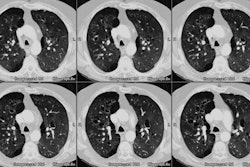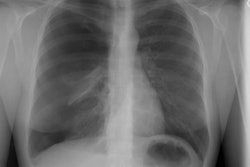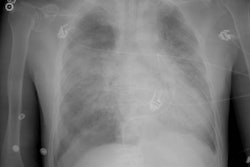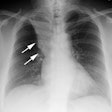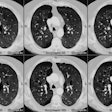Radiology 1997 Jun;203(3):721-726. Obliterative bronchiolitis: individual CT signs of small airways disease and functional correlation.
Hansell DM, Rubens MB, Padley SP, Wells AU
PURPOSE: Individual features of small airways disease depicted at computed tomography (CT) were correlated with functional indexes in patients with obliterative bronchiolitis. MATERIALS AND METHODS: Fifteen patients (all women) who fulfilled the strict criteria for diagnosis of obliterative bronchiolitis underwent thin-section CT at full inspiration and at end expiration. The CT scans were scored by two observers for extent of decreased attenuation of the lung parenchyma; end-expiration CT signs of air trapping; and bronchial dilation, wall thickening, and mucous plugging. The functional importance of each CT sign was evaluated. RESULTS: Areas of decreased attenuation were present in all patients (median score at end expiration, 61%; range, 21%-83%). Bronchial wall thickening was identified in 13 of the 15 patients. Correlations of the extent of decreased attenuation and measures of air-flow obstruction were strongest between decreased attenuation at end expiration and air flow at low lung volumes (r(s) = -.70, P < .005). This relationship remained intact after correction for the severity of bronchial wall thickening. CONCLUSION: In patients with obliterative bronchiolitis, the extent of decreased attenuation at CT was most strongly related to depression of pulmonary function tests of the small airways. Decreased attenuation is the cardinal sign for further quantitative studies of obliterative bronchiolitis.
PMID: 9169694, MUID: 97313090
